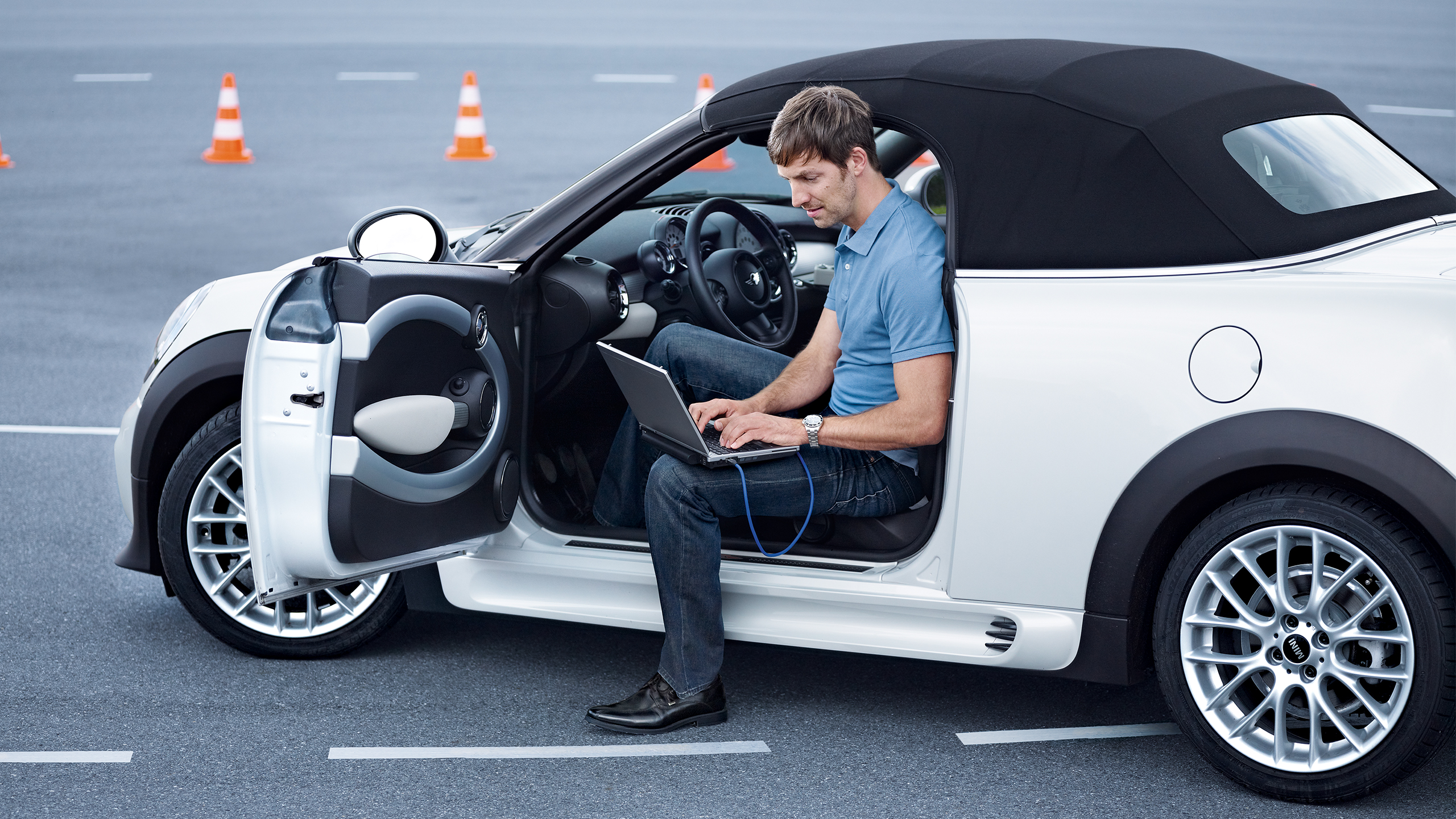Driving Experience 4.0
Connectivity, autonomous driving and smartphone apps are advancing chassis and suspension development
Digitalization has long since reached the chassis and suspension too. Software will have a major influence on driving experience and make it possible to connect the various subsystems. Autonomous driving and vehicle connectivity will open up entirely new options and change the automotive value chain. Consumers too will benefit from this development: new apps will provide them with information, such as on tire condition or vehicle loading.
Anyone only thinking of hardware, such as steering system, brakes or suspension, when they hear vehicle chassis has not paid sufficient attention to the developments that have taken place over recent years. “Sensors in the vehicle are one of the biggest collectors of data in the vehicle”, explains Simon Heine, Senior Vice President for Chassis and Suspension at IAV. “In the meantime, all actuators are electrified and are controlled by software.”
For automobile manufacturers, this development is very important because their customers’ driving experience is extensively governed by the chassis and suspension and, through digitalization, can be adjusted to suit a particular situation – for example through the “Sport” setting.
This also benefits driving safety because interconnected chassis and suspension sub-systems work together in the event of problems occurring. If, for instance, the steering function is underperforming, the brake can intervene and provide support. And if the vehicle gets into a critical situation, the chassis control system can actively access the most effective component and, by means of steering system, brakes and suspension, restore stability.
Precise road information from the cloud
Vehicle connectivity will open up completely new perspectives. “Even today, vehicle data and temperature readings can be used to ascertain road surface conditions in winter”, Heine reports. “However, these measurements always come with an element of uncertainty. In future, the data from many vehicles could be evaluated in the cloud and deliver precise information on road conditions ahead – such as where to expect particularly slippery stretches.” Marked via the cloud on a driving safety map, this gives drivers real added value and opens up new business models for the manufacturers of chassis systems.
In just a few years, autonomous driving and customers’ changed mobility habits will bring about fundamental changes to the automotive value chain. In future, owning a vehicle would appear to be losing importance – instead, there will be more demand for mobility services. “We are currently witnessing the emergence of many mobility service providers with internally developed or individualized vehicle fleets”, Heine says. “As vehicle development is not their core business, these companies don’t have large engineering teams which means that development partners like IAV in particular will be in greater demand on the chassis side.”

“Robotic Chassis” for autonomous driving
IAV’s job then will be to develop entire chassis and provide its customers with a platform for their own service, such as for autonomous driving. IAV’s developers are already working on this: “Robotic Chassis” is the work title of the ambitious project.
As no human driver will be sitting behind the wheel anymore and be able to take control in an emergency, absolute reliability will be essential in a situation like this. “No matter what happens: a driverless vehicle must be able to cope with a hazardous situation on its own and under all circumstances”, Heine explains.
But today’s vehicle owners and drivers will also derive greater benefit from the digitalization of chassis and suspension in future. Smartphone apps, for example, will be able to read tire markings via the built-in cell phone camera and, by comparing them with a database, deliver information on the model used (for example test results). It will also be possible to diagnose tires. “In this case, the app will use the camera to see whether tires or wheel rims are damaged”, Heine explains. “This will make it possible to identify bulges and cracks as well as the age and depth of tire tread.”
Cell phone and acceleration sensors identify faulty shock absorbers
Soon it will also be possible to identify vehicle payload or overloading by smartphone app. “It will automatically identify the vehicle type and calculate load from the photographed ground clearance”, Heine says. “If necessary, it will give the driver a safety warning – for example indicating that the vehicle is unevenly or too heavily loaded.”
And in future, apps are to provide information while driving too. In an acoustic fault analysis, the cell phone will record disturbing noises through its microphone and identify numerous problems on the basis of their acoustic signature. Together with the acceleration sensors, for example, faulty shock absorbers could be identified in this way as well.
As it must be expected that autonomous vehicle operation will involve changing drivers and passengers, the responsibility for diagnosing damage remains with the operator who can get the vehicle into the repair shop in good time so as to avoid accidents or immobilization times. IAV is already working of apps of this type – enhancing digitalization in the field of chassis and suspension.
